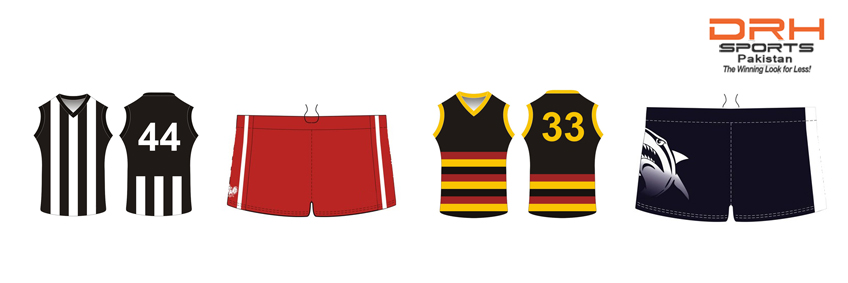Today AFL uniforms are designed to help the player to run, jump, drop, and move with agility and receive blows in a sport of much physical contact as it is football. For design and manufacturing engineers specialized currently involved in textiles, polymers, and other materials, as well as looking good, the uniforms have to maximize and support the physical performance of the player.
The body releases a lot of heat to run continuously from one side of the court to the other.
Imagine how awkward it would be; for example, play with a uniform made of wool. Well, believe it or not, these materials were made the first football shirts, the late nineteenth century; heavy, hot and uncomfortable wool. Moreover, these shirts absorbed water when it rained, making the heavier players.
By playing any sport, the last thing an athlete wants is to feel heavy. Soccer requires agility and speed. A fabric that becomes as heavy as wool contributes nothing to sports performance. Therefore, switching to cotton was a substantial improvement that was introduced in the early twentieth century.
Optimum fabric
However, the players needed more appropriate uniforms to improve their performance; ie fabrics breathe better. That change, which came later, is based on two principles of physics: percolation (the slow passage of a fluid through a porous material) and evaporation (when the liquid passes to the gaseous state). An ideal place for sport should regulate optimally the heat and humidity of the athlete textile; quickly absorb and release moisture; should not stretch or shrink should be wet, and it is important that it is durable, easy to care, light and pleasant to the touch.
Natural fibers such as cotton love moisture; they adore her. When they are in contact with it, from the sweat of the player, for example, absorb quickly. But cotton loves so much moisture that will not let go easily, so the sweat stays there, caught in the shirt.
You see, none of these materials has suitable features or benefits, so it was necessary to seek new textiles to find the desired balance. The answer was found in intermediate synthetic fabrics like nylon and modified polyesters, which have the absorbent cotton and easy evaporation property that provides the pure polyester. AFL Uniforms Suppliers nowadays rely on Polyesters to get the optimal uniform quality.











